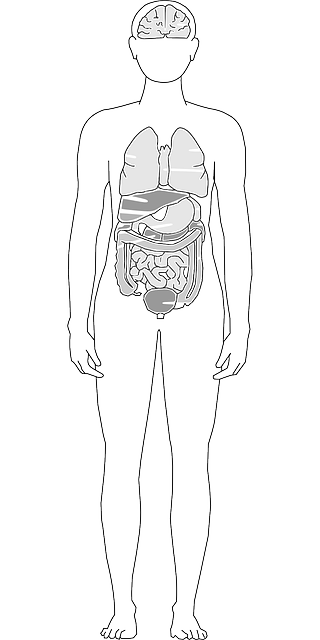Internal linking automation tools are essential for affiliate bloggers looking to boost SEO and user experience. By automatically generating links between relevant blog posts, these tools save time, enhance content organization, and improve search engine rankings. Key metrics like click-through rates and page views should be monitored to assess the impact of automation. Future trends in Internal Link SEO include leveraging machine learning for content analysis and optimization, ensuring content quality and relevance remain paramount as search engines evolve.
In the dynamic landscape of affiliate marketing, optimizing your blog for search engines is paramount. One often overlooked yet powerful strategy lies in internal linking automation. This article delves into the essence of internal linking, its significance in SEO strategies, and how automation can revolutionize your affiliate blogging game. From understanding the benefits to exploring top tools, we’ll guide you through every step, offering insights on structure optimization and measuring success. Uncover the future trends shaping internal link SEO for sustainable growth.
- Understanding Internal Linking: The Foundation of SEO Strategy
- Benefits of Internal Link Automation for Affiliate Bloggers
- Top Tools and Plugins for Seamless Internal Linking Implementation
- Strategies for Optimizing Your Blog's Internal Link Structure
- Measuring Success: Analyzing the Impact of Internal Linking Automation
- Future Trends in Internal Link SEO for Affiliate Marketing
Understanding Internal Linking: The Foundation of SEO Strategy

Internal linking is a fundamental strategy in SEO that connects relevant pages within a website to enhance user experience and search engine visibility. By creating a network of interlinked pages, websites can guide users and search engines through their content, improving navigation and data hierarchy. This is where internal linking automation tools step in as game-changers.
These plugins offer an efficient way to manage and optimize internal links, saving time and effort. With automated features, bloggers and SEO enthusiasts can quickly identify opportunities for strategic linking, ensuring every page has its place within the website’s structure. From generating a list of anchor texts to suggesting relevant pages for linking, these tools provide valuable insights. An internal linking automation tutorial or tips can guide users on implementing these strategies effectively, ultimately leading to better content organization and improved SEO optimization.
Benefits of Internal Link Automation for Affiliate Bloggers

For affiliate bloggers, effective internal linking is key to enhancing user experience and boosting search engine rankings. Implementing internal linking automation allows for strategic connections between relevant content on your blog, which has several advantages. Firstly, it saves time by automatically generating links based on predefined criteria, ensuring a seamless reading journey for visitors. This strategy enables you to maintain a high-quality user experience while increasing the likelihood of longer session durations and reduced bounce rates.
Additionally, internal linking automation SEO benefits include improved search engine visibility. By strategically placing internal links, search engines can crawl and index your content more efficiently, leading to better keyword rankings over time. This optimization technique also facilitates the distribution of link equity across your blog’s pages, helping lesser-performing posts gain visibility and ultimately increasing the overall authority of your affiliate website.
Top Tools and Plugins for Seamless Internal Linking Implementation

In today’s digital era, effective internal linking is crucial for optimizing your website’s SEO and user experience. Top tools and plugins designed for internal linking automation make this process seamless and efficient. These solutions offer advanced features like contextual anchor text generation, smart link placement, and automated content discovery, enabling you to create a harmonious tapestry of internal links that boost search engine rankings and drive traffic across your site.
One standout plugin is Yoast SEO, which includes an internal linking feature that helps identify linked pages and suggests relevant internal links. Another powerful option is Anchor, a comprehensive internal linking automation tutorial that guides you through setting up dynamic links with ease. By leveraging these tools for internal linking automation optimization, you can ensure your website’s structure supports both user navigation and search engine crawlers, ultimately enhancing your SEO strategy.
Strategies for Optimizing Your Blog's Internal Link Structure

To optimize your blog’s internal link structure, start by identifying key topics and creating a hierarchical layout using relevant anchor text. This strategic approach ensures that each post connects to related content, enhancing user experience and search engine visibility. Tools like internal linking automation can help streamline this process, offering features such as automatically suggesting links based on content similarity or topic relevance.
Implementing an internal linking automation strategy involves regularly reviewing and updating your links to maintain freshness and accuracy. Consider using plugins that allow you to set up custom link patterns tailored to your blog’s unique structure. By combining these practices with a focus on high-quality, contextual anchor text, you can significantly improve the effectiveness of your internal linking, boosting both SEO performance and reader engagement.
Measuring Success: Analyzing the Impact of Internal Linking Automation

Measuring success is a crucial step after implementing internal linking automation tools. By analyzing the impact, you can understand how these plugins have contributed to your SEO strategy. Keep an eye on key metrics such as click-through rates (CTRs) and page view increases for linked pages. These will indicate whether visitors are engaging with the content more effectively due to improved navigation.
Internal linking automation optimization goes beyond initial setup. Regularly review and refine anchor text diversity, ensure a natural flow of links, and monitor any potential issues that might affect user experience or search engine crawlers’ ability to index pages properly. An internal linking automation tutorial can guide you through these processes, helping you optimize your site for better SEO performance.
Future Trends in Internal Link SEO for Affiliate Marketing

The future of Internal Link SEO for affiliate marketing is ripe with potential thanks to advancements in technology and evolving user behavior. As search engines become increasingly sophisticated, they’re focusing more on content quality, relevance, and user experience – all areas where strategic internal linking automation can play a significant role. By automating the process of identifying relevant links within content and strategically placing them for maximum impact, affiliates can enhance their SEO efforts while saving valuable time.
An effective internal linking automation strategy doesn’t just involve plug-and-play solutions; it requires a deep understanding of your audience and website architecture. An internal linking automation tutorial or optimization guide specifically tailored to affiliate marketing will be invaluable in navigating these trends. Tools that leverage machine learning to analyze content, suggest relevant links, and optimize anchor text are gaining popularity. Embracing these innovations can empower affiliates to stay ahead of the curve, improve their site’s visibility, and ultimately drive more conversions.
